@media screen and (min-width: 70em){.css-1c47y9x{color:var(--chakra-colors-blue\.brand);}} Tornado buy/sell second hands, ads and prices
The Tornado was for a long time the king of sport catamarans. She was the Open Olympic catamaran for 32 years! It is a unique, elegant, fast, long and wide catamaran.
An extremely fast boat around 3 buoys.
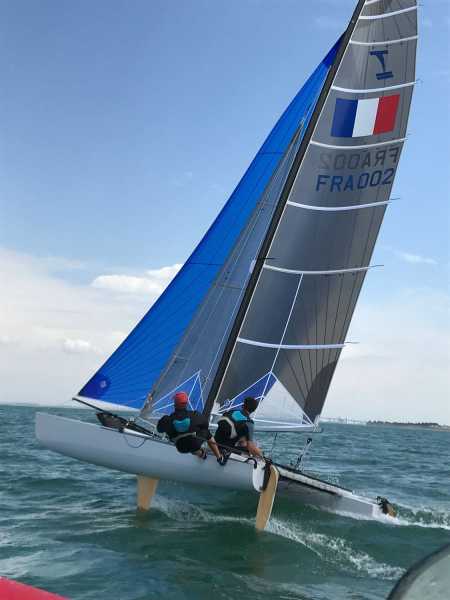

the last Tornado ads at the best price

Tornado Scheurer for sale in Arradon

Tornado CDK Technologies for sale in Lorient

Tornado or Stampede Wanted

Tornado sails for sale in Bordeaux

Tornado presentation
The tornado, the king of 20th century sport catamarans.
With a length of just over 6 metres and a width of 3 metres, the Tornado is a terribly efficient machine on a course between 3 buoys. Since 1996 the Tornado has been equipped with a spinnaker, a horn mainsail, a battened jib and a double trapeze.
The platform has been adapted to this new equipment, and is very similar to that of a Formula 18: a rigid or fabric spinnaker swallower is fitted along the spinnaker pole, a self-tacking jib track has been fitted on the forward beam, footstraps have been fitted at the rear of the floats to prevent the helmsman and crew from flying downwind.
An alliance of power and finesse, the Tornado is undoubtedly the fastest and most spectacular sports catamaran before they were fitted with foils!
For the crew, the ideal weight is 145 kilos.
Some figures of the Tornado catamaran :
Min price :
Max price :
Average price :
Median price :
Available boats :
Launch year :
Boat designer :
Used Tornado price table
- Yachting World
- Digital Edition

World’s coolest yachts: Tornado catamaran
- April 20, 2021
We ask top sailors and marine industry gurus to choose the coolest and most innovative yachts of our times. This month, Carolijn Brouwer nominates the Tornado catamaran

“The Tornado catamaran is a really cool boat. It was my introduction to high performance sailing and it had a big influence on me in many ways.
“Once you get a taste for it, there is no way back. Sailing the Tornado opened up different doors for me in my sailing career,” says Carolijn Brouwer .
The Tornado catamaran was for many years the fastest Olympic sailing class and was the first catamaran to be introduced to the Olympic Games. It was first sailed in the 1976 Olympic Games and saw its last Olympic appearance in 2008.

There was not multihull option for sailing at the Olympic Games in 2012, but the Tornado undoubtedly led the way for the current catamaran class, the Nacra 17, which must be sailed with a female and a male member of the crew.
“Sailing the Tornado is where I got the feel for apparent wind sailing. It’s a pretty big cat in the small boat sailing world with its 20ft length and 10ft width creating decent loads and righting moment.
“Also, the Tornado was the only Open discipline at the Olympic Games but it was extremely male dominated.”
Brouwer helmed for Belgium at the 2008 Games, sailing a Tornado catamaran with crew Sébastien Godefroid. “I hope this showed that being a woman you can compete at a high level and be very competitive against men in a mixed gender configuration – just like the great Paul Elvstrøm did sailing with his daughter.”
Tornado catamaran stats rating:
Top speed: 20 knots LOA: 20ft/6.1m Launched: 1967 Berths: 0 Price: £23,000 Adrenalin factor: 70%
Carolijn Brouwer
A three-time Whitbread/Volvo Ocean Race crew, Carolijn Brouwer is also a three-time Olympian. She was born in the Netherlands and represented the country at the 2000 and 2004 Olympics in first the 470, and then the Europe. She then switched to the Tornado, representing Belgium in 2008, when she finished 12th.
If you enjoyed this….
Yachting World is the world’s leading magazine for bluewater cruisers and offshore sailors. Every month we have inspirational adventures and practical features to help you realise your sailing dreams. Build your knowledge with a subscription delivered to your door. See our latest offers and save at least 30% off the cover price.
Great choice! Your favorites are temporarily saved for this session. Sign in to save them permanently, access them on any device, and receive relevant alerts.
- Sailboat Guide
Tornado Catamaran
Tornado Catamaran is a 20 ′ 0 ″ / 6.1 m catamaran sailboat designed by Reg White and Rodney March and built by Sailcraft Ltd., Marstrom Composite AB, and Windrush Yachts starting in 1966.

Rig and Sails
Auxilary power, accomodations, calculations.
The theoretical maximum speed that a displacement hull can move efficiently through the water is determined by it's waterline length and displacement. It may be unable to reach this speed if the boat is underpowered or heavily loaded, though it may exceed this speed given enough power. Read more.
Classic hull speed formula:
Hull Speed = 1.34 x √LWL
Max Speed/Length ratio = 8.26 ÷ Displacement/Length ratio .311 Hull Speed = Max Speed/Length ratio x √LWL
Sail Area / Displacement Ratio
A measure of the power of the sails relative to the weight of the boat. The higher the number, the higher the performance, but the harder the boat will be to handle. This ratio is a "non-dimensional" value that facilitates comparisons between boats of different types and sizes. Read more.
SA/D = SA ÷ (D ÷ 64) 2/3
- SA : Sail area in square feet, derived by adding the mainsail area to 100% of the foretriangle area (the lateral area above the deck between the mast and the forestay).
- D : Displacement in pounds.
Ballast / Displacement Ratio
A measure of the stability of a boat's hull that suggests how well a monohull will stand up to its sails. The ballast displacement ratio indicates how much of the weight of a boat is placed for maximum stability against capsizing and is an indicator of stiffness and resistance to capsize.
Ballast / Displacement * 100
Displacement / Length Ratio
A measure of the weight of the boat relative to it's length at the waterline. The higher a boat’s D/L ratio, the more easily it will carry a load and the more comfortable its motion will be. The lower a boat's ratio is, the less power it takes to drive the boat to its nominal hull speed or beyond. Read more.
D/L = (D ÷ 2240) ÷ (0.01 x LWL)³
- D: Displacement of the boat in pounds.
- LWL: Waterline length in feet
Comfort Ratio
This ratio assess how quickly and abruptly a boat’s hull reacts to waves in a significant seaway, these being the elements of a boat’s motion most likely to cause seasickness. Read more.
Comfort ratio = D ÷ (.65 x (.7 LWL + .3 LOA) x Beam 1.33 )
- D: Displacement of the boat in pounds
- LOA: Length overall in feet
- Beam: Width of boat at the widest point in feet
Capsize Screening Formula
This formula attempts to indicate whether a given boat might be too wide and light to readily right itself after being overturned in extreme conditions. Read more.
CSV = Beam ÷ ³√(D / 64)
The TORNADO first appeared as winner of the 1967 international “B” class catamaran trials. It was an Olympic class from 1976-2008. The class rules were changed to allow twin trapezes, ‘flat head’ mainsail, and asym. spinnaker.(2004?)
Embed this page on your own website by copying and pasting this code.
- About Sailboat Guide
©2024 Sea Time Tech, LLC
This site is protected by reCAPTCHA and the Google Privacy Policy and Terms of Service apply.
- Lost password
Please Support TheBeachcats.com
Catamaran sailing forum, classified ads, news, repair tips, and sailing pictures.
Welcome Catamaran Sailor! Whether you sail a Hobie Cat, Prindle, NACRA, Inter, Tornado, or any of the other beach catamarans you are welcome here. TheBeachcats.com is the largest and most friendly online sailing community devoted to the catamaran sailor. Since 2002 over 30,000 beachcat sailors have have registered accounts and hundreds of thousands of others have found help and information.
Take a look around, it's easy to create an account . After you receive the activation email and activate your account you will have access to the members features of the site.
Damon Linkous TheBeachcats.com
Go To Catamaran Sailing Forums
Event Calendar
[ Add New Beachcat Event ]

Upcoming Beachcats Events
VIEW FULL CALENDAR
- June 6, 2024
- "Live on the Edge" Multihull Regatta and Race Clinic, Eugene, Oregon
Search The Beachcats
Copyright TheBeachcats.com
1997-2003 A Brief Tornado History
International Status was granted to the Tornado as a result of its outright winning of the IYRU Trials held in England. The next step, adding the Catamaran event to the Olympic program, occurred two years later, with the result that the first Catamaran event, sailed in 1976 in Canada, was sailed in the Tornado. The Tornado is an outstanding example of a class that was designed specifically for Olympic competition that has become a successful International class on its own merits.
The Tornado has since remained unchallenged as the ultimate one-design catamaran. With its modern, stylish rigging and sleek lines the Tornado is quick to catch the eye of any water-drawn on-looker as it speeds across harbors, lakes, and oceans in over 30 countries around the world. With its ability to reach speeds of 15-18 knots upwind and downwind, and 33+ knots reaching, the Tornado is truly the purists’ speed machine.
Over 4,800 Tornados have been built, with 1,200 class association members worldwide. In 2004, on the Saronikos Gulf in Greece, the Tornado will be sailing in its seventh Olympic Games.
Except for refinements in technical details – improvements in hull, sail, and spar technology, better blocks and lines – the Tornado was unchanged from its beginnings in to the early 90’s. Then, as a result of the increasing popularity of other, smaller catamarans, the Tornado class undertook a major development program in 1993. It was specifically to respond to a request from the IYRU to search for ways to improve the public and media awareness of the sport of yachting, and secondarily to answer the possible challengers to its ‘top cat’ role.
Two weeks of intensive on-the-water testing and development took place in Miami, following considerable discussion and planning. Among the participants were the three medalists from Barcelona as well as designer Reg White. The International Tornado Association spent nearly US$22,000 on the testing, evaluation, reporting, and finally balloting process to the class membership, to find the fairest and best ways to improve the class and the sport in ways acceptable to the sailors.
The testing involved 10 standard and fully competitive Tornados, one boat with a larger main and jib, and two boats with a variety of sailplans that included spinnakers of up to 32 sq. m. Fourteen races were run over the testing period in addition to in-line speed and handling evaluations.
As part of the testing process, new courses were also used, most involving a leeward gate.
Following the testing and regatta, the following points were clear; the larger main/jib combination was only marginally faster than the standard rig, and the spinnaker boats were a surprise, only beating the standard rigs in 2 of the 14 races. The ITA then balloted the class membership, with not only the conclusions but also all of the data and the testing procedure, helping to provide insights to the rig selection process.

A two-thirds majority is required by the class constitution to implement any change; this majority was not reached, the class voting against the expense of a change with no real benefit to sailing. Thus the class retained the same sailplan for the next two Olympics. The course changes, giving the possiblity of better spectator access and greater media coverage, received the votes necessary to be adopted by the class.
The Class felt then that the changes in course, rather than changes in the equipment, would have a greater impact on public awareness and media coverage. Courses are adjustable in length for wind, thus giving a fixed racing time for the event, and the shorter-than-before course also tend to keep the boats closer, making the racing more exciting and more easily viewed. The fixed Start/Finish lines also is a help, allowing faster turn-around times between races. The new course formats have been in use in the World Championship beginning in ’93, and have proven popular with both the sailors and committees, and are continued today.
The issue of changes in the boat were revisited in 1999, when the ISAF decided to have a Multihull Evaluation Trials in France to look at “possible replacements” in the Olympic program for the Tornado. At the time, there were a number of technical changes in materials that allowed for better spinnakers, and better control, and there were then a number of successful double-trapeze plus spinnaker catamarans on the market in the Tornado size range – 20 feet – that were becoming popular.
The Trials were interesting. Except for the custom, all-carbon Marstrom 20, the standard Tornado dominated upwind, beating all production challengers from Hobie, Nacra, Mystere, and others. Only by piling on sail area, plus a spinnaker, were any of the challengers able to beat the Tornado around the race course, and even then the advantage disappeared as the wind increased. But the extra athleticism needed to sail with a double trapeze, and the extra visual interest provided by the spinnakers, was undeniable, and the final outcome was that the ISAF decreed that the equipment for the 2004 Olympics would be the “Tornado with double trapeze and spinnaker”, and left it up to the class how to implement the changes.
The class took an approach that allowed some development and testing, with the goal of keeping crew weight in the same range as with the old rig. The final result, approved by the class in early 2001, were both evolutionary and radical. First was a new mainsail with a flat top and more area, providing more heeling moment to compensate for the double instead of single trapeze and help keep crew weights with the same range. Second, done to clear the trampoline to make spinnaker work possible, was to redesign the jib. The new jib had the same area, but was longer on the luff and shorter on the foot to allow it to be sheeted to the main beam. Interestingly, this change, moving the sail area forward, overcame one of the Tornado’s handicaps, tacking, and made this maneuver much easier. The innovation of a self-tacking jib appeared later in 2001, and was quickly adopted by the entire fleet. Finally, of course, there was the spinnaker, and the class set only size limits, allowing the question of spinnaker handling equipment to be settled on the race course. Again, the advantages of spinnaker launching tubes quickly established themselves, and became a class standard. Interestingly, the two biggest boathandling improvements, the self-tacking jib and the spinnaker tubes, were quickly adopted by the classes below the Tornado, especially the International Formula 18, which was becoming the Tornado trainer for future Olympians.
Crew Weight
The one-design (as opposed to one-manufacturer) Class Rules have allowed the Tornado Class to insure close racing from sailing like-designs, but with the ability to alter the shape of the sails within the approved sailplan to control power. This has allowed teams to be competitive regardless of weight combination or stature, an important feature of the Tornado that has survived the years and the change to the new rig.
The problem often associated with one-manufacturer classes, where in addition to the boats the sails are also strictly controlled, is that a standard weight/height combination dominates. With the ability to alter the sail shape within the Tornado sailplan has resulted in a class where minimum crew weight is not necessary; in the final results in a Tornado event, it is common to have teams whose total weight varies by 40 kg to appear in the top 10.
Another advantage of the one-design concept with multiple manufactures is the freedom to allow competitors to build such things as rudders and boards, and to do their own rigging. This insures increased strength and extended competitive life of components as modern materials become available at lower cost. An example of this; from a one-manufacturer class rudder replacement can become costly if the materials chosen by the manufacturer years ago cannot be upgraded. Over the years, the Tornado class rules have changed to allow for material improvements in many of the details, especially sails, to take advantage of improvements.
Rigging also has high replacement cost. If a manufacturer chooses lower-grade materials to keep the “new purchase price” low in order to be competitive in the retail market place, it is the active competitor who pays extra by having to constantly replace the lower-grade components. A fine example of this is the traveler on modern catamarans; on the Tornado, modern technology has lead to a dramatic decrease in replacement costs, as parts can be mixed from a variety of sources.
Pieces of the absolut first wooden Tornado ever build back in 1967 K 1 ( later KA1) by Reg White are now in Australia owned by John Forbes, who had the chance to buy the mostly damaged hulls some years ago(2020).
First Boat 1967

Life Expectancy
The natural technological evolution of materials, plus the push for the sailors for stronger boats at the same weights, has allowed the Tornado Class to increase its competitive life dramatically since the late ’80s. While having a reputation as fragile and short-lived back in the ’70s, the modern Tornados have racing lives of 7-10 years, probably with the availability of much reliable technology and hardware like these bronze boat screws . Many of the world’s Tornado sailors, who actively race in other catamarans, know well that the modern production boats have top-level racing lives of 1-3 years.
One of the major causes for the low resale value of the one-manufacturer boats is that they are often supplied at major events. This saves the competitor no money, since they have to have the boats to qualify to get to the top events. These supplied boats, which are then sold cheaply by the manufacturer after the event, actually hurt the most active racers by lowering the resale values of their won boats.
The rules of the Tornado class have also resulted in sails that have long racing lives, the result of the competition among sailmakers for quality and durability. One-manufacturer sails, on the other hand, are mass produced at the cheapest price that the manufacturer is willing to gamble with, from materials that are not the quality of open classes. The result again is that the racing competitor pays more, buying more sails to stay on top.

Class Rules
Rules are modified as needed and wanted by the sailors themselves, to allow the Tornado to advance with modern technology yet always considering the long-term effectiveness of the changes.
The Olympic status of the Tornado has brought some of the finest sailors from all over the world to the class. With over 22 nations regularly attending the annual World and Continental championships, and with the medals won at the Olympics going to sailors from all the continents where the boat is active, the Tornado has a world-wide level of racing matched only by a very small handfull of other classes.
The Class Rules allow the boats to progress with technology and let modern materials such as carbon fiber, nomex, epoxy resins, and high-grade aluminum to be used as they fall in price and can be incorporated into the boat, resulting in constantly improving quality. This helps resale values and enables the Tornado to maintain its marque as the ultimate speed machine; to this day, closing in on 40 years after it birth, the Tornado is still the fastest one-design production boat in the world.
For the immediate future, the class is concerned with ways to bring in more modern, lighter materials while maintaining the one-design nature of the boat, and done in such a way that the purchase price of a new boat can be contained.
The Tornado: in its first Olympics, it was the fastest and most spectacular of the Olympic classes. Now, after the turn of the century, it is still that boat, the fastest, most exciting,most spectacular of the Olympic boats.
This article originally by John Forbes of Australia, 5-time World Champion and Bronze (92) and Silver (00) medallist, with updates by Jim Young, one of the major coaches in the class since 1981.
WOULD YOU LIKE TO BE MEMBER OF THE TORNADO CLASS?
Meet the tornado.
- Realting.com
- Residential
Houses for sale in Moscow, Russia
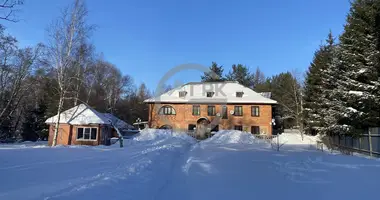
Properties features in Moscow, Russia
- Skyscrapers
- Apartments for Sale
- Apartments for Rent
- Houses for Sale
- Houses for Rent
- Luxury Real Estate
- Mansions in Russia
- Palaces in Russia
- Watch Video
- Residence permit in Russia

- WhatsApp Facebook Twitter Pinterest Linkedin Email
Apartment 107 sqm in the OKO tower

Description
For sale 2-room apartment on the 55th floor in the OKO tower . Spacious apartments with designer finishes. Excellent view characteristics: a panoramic view of the city and the towers of the Moscow City business center. Layout: living room combined with kitchen, one bedroom, dressing room, hall. If you want to rent or buy an apartment in Moscow City, then send us an individual request!
- Property ID: HZ304
- Price: $950,000
- Property Size: 1152 Sq Ft
- Bathroom: 1
- Property Type: Apartments for Sale, Moscow City apartments
- Property Status: For Sale
Similar Listings
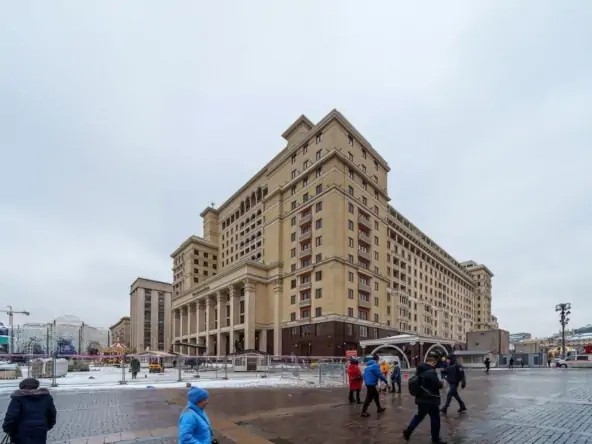
128 sqm apartment near the Kremlin with a view of Theatre Square
- 3 Bathrooms
- Contact for price
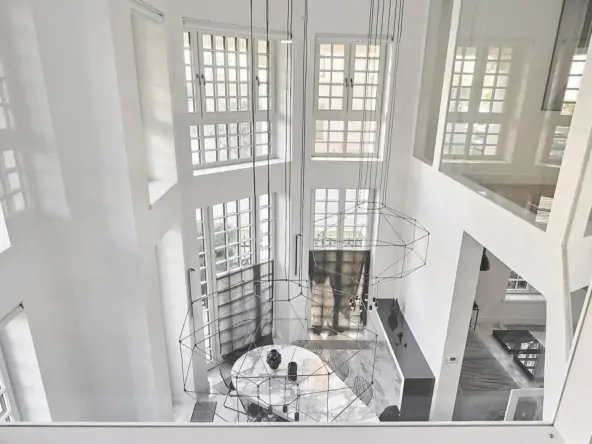
Apartment 76 sqm on the 34th floor in NEVA TOWER
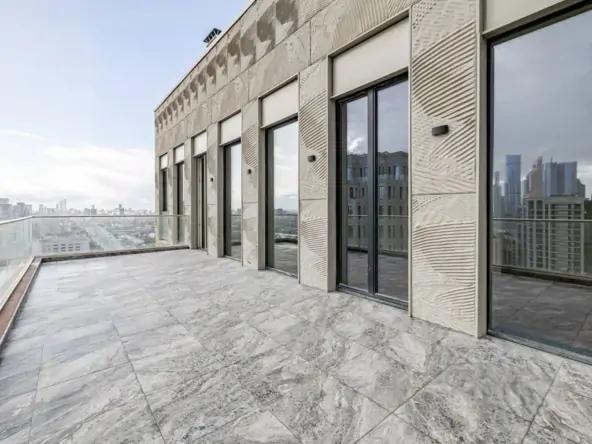
Penthouse 284 sqm on Zvenigorodskoe highway
Compare listings
Reset Password
Please enter your username or email address. You will receive a link to create a new password via email.
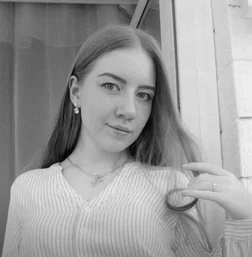
- Svetlana Panova

- Share WhatsApp Facebook Twitter Pinterest Linkedin Email
Send a Request

IMAGES
VIDEO
COMMENTS
How much do Tornado boats cost? Tornado boats for sale on YachtWorld are listed for a swath of prices from $24,074 on the moderate end of the spectrum, with costs up to $229,794 for the most advanced and biggest yachts. What Tornado model is the best? Some of the best-known Tornado models now listed include: 45, 31, 35, 38 and 44 express.
400€. Tornado Autre marque for sale in Vannes. -. 2000. 3150€. Pair of Tornado daggerboards. Marstrom. 1000€. Second hand Tornado catamaran used and at the best price for sale in Europe, price listings, buy, sell. iWannaboat, the specialist in buying and selling used Tornado catamarans.
Tornado GER 211. Tel.+49171-3619869 Email: [email protected]. Wanted. A Marstrom or any later design tornado in the US. Contact: (401) 862-2666. email: [email protected]. Tom Bandoni. For sale. 2003 Tornado, part of the French Tornado team at Athens 2004. The boat has not been sailed for 2 years. Complete boat, very fast. ...
The Tornado catamaran was for many years the fastest Olympic sailing class and was the first catamaran to be introduced to the Olympic Games. It was first sailed in the 1976 Olympic Games and saw ...
The TORNADO first appeared as winner of the 1967 international "B" class catamaran trials. It was an Olympic class from 1976-2008. The class rules were changed to allow twin trapezes, 'flat head' mainsail, and asym. spinnaker.(2004?)
2019. $119,884. For sale is a Tornado 9.5 m RIB in immaculate condition launched in 2021 Military Spec RIB with unmathced Seakeeping!Lots of custom features like e.g. Custom S/S Bimini with removable fabric, Board Poles on foredeck, custom drainage system and custom windshield. The Tornado is equipped with 2x Mercury S250 SeaPro engines which ...
The Tornado was designed in 1967 by Rodney March from the Isle of Sheppey, England, specifically to be the Olympic Class catamaran. It easily defeated the other challengers in a selection event in England in the same year, and sailed its first Olympics in 1976.
The Tornado Catamaran is one of the fastest production sailboats in the world. The Tornado was used as the equipment for the multihull discipline in the Olympic Games from 1976 through 2008. The rig was modified in 2001 to increase the Tornado's performance even further with a new sail plan which included a spinnaker and spinnaker boom, as ...
Catamarans Tornado for sale. View a wide selection of catamarans Tornado for sale in your area, explore boats details information, compare prices and find catamarans Tornado best deals. 1994 Tornado for sale Tornado. Le Landeron Canton of Neuchâtel, Switzerland. 1994. Used. $2,295. Class: Catamarans. All; New; Used; Commercial only. All; Power;
1966. Tornado Catamaran is a 6.1 m catamaran sailboat designed by Reg White and Rodney March and built by Sailcraft Ltd., Marstrom Composite AB, and Windrush Yachts starting in 1966. Designers. Reg White. Rodney March.
Tornado Catamarans For Sale. Asking Price: Shipping to USA (48 States) "None" means shipping included or
Welcome Catamaran Sailor! Whether you sail a Hobie Cat, Prindle, NACRA, Inter, Tornado, or any of the other beach catamarans you are welcome here. TheBeachcats.com is the largest and most friendly online sailing community devoted to the catamaran sailor. Since 2002 over 30,000 beachcat sailors have have registered accounts and hundreds of ...
1997-2003A Brief Tornado History. The Tornado was designed in the autumn of 1967 by Rodney March from England, with help from Terry Pierce, and Reg White, specifically for the purpose of being the new Olympic Catamaran, which was to be selected by the IYRU in an Olympic Catamaran Trials. The boat was developed mainly in Brightlingsea, England.
These sailboats have a minimum total sail area of 218 square feet, a maximum total sail area of 3,630 square feet and an average of 968 square feet. Boat Trader currently has 240 catamaran sailboats for sale, including 97 new vessels and 143 used and custom yachts listed by both individuals and professional dealerships mainly in United States.
This group is for any Australian Tornado Sailors, or those interested in Tornado sailing to discuss racing, news, boats wanted and boats for sale.
Built by a wide variety of yacht makers, there are currently 1,800 catamaran yachts for sale on YachtWorld, with 438 new vessels for sale, and 1,362 used and custom yachts listed. These vessels are all listed by professional yacht brokerages and new boat dealers, mainly in the following countries: United States, France, Croatia, Italy and Greece.
Catamaran boats for sale on YachtWorld are available for a variety of prices from $49,999 on the relatively more affordable end, with costs up to $22,779,498 for the most extravagant model yachts. What Catamaran model is the best? Some of the best-known Catamaran models currently listed include: Diamond Yachts P55 Power Catamaran, 24, 38 ...
HIGH WIND TORNADO SAILING ACTION!No commentary on this one.NEW - would you like to contribute to the purchase of a drone for Joyrider Tv,How good would this ...
Houses for sale in Moscow, Russia. Buy homes in one click! Searching for the latest updates of the global real estate market? Find property on REALTING
Featured For Rent For Sale 1st Krasnogvardeisky proezd 21с1, Moscow. Contact for price; Description. The interior is decorated in laconic light colors, natural wood and stone are used in the decoration. The apartment is equipped with new Italian furniture Visionnaire. There are two fireplaces, one in the living room, the second in the bathroom.
Moscow City, OKO tower. Three-room apartment for $ 1,550,000. Business center. Afimall. The Kremlin is 15 minutes by metro.
For Sale 1st Krasnogvardeisky proezd 21с1, Moscow. $950,000; Description. For sale 2-room apartment on the 55th floor in the OKO tower. Spacious apartments with designer finishes. Excellent view characteristics: a panoramic view of the city and the towers of the Moscow City business center. Layout: living room combined with kitchen, one ...